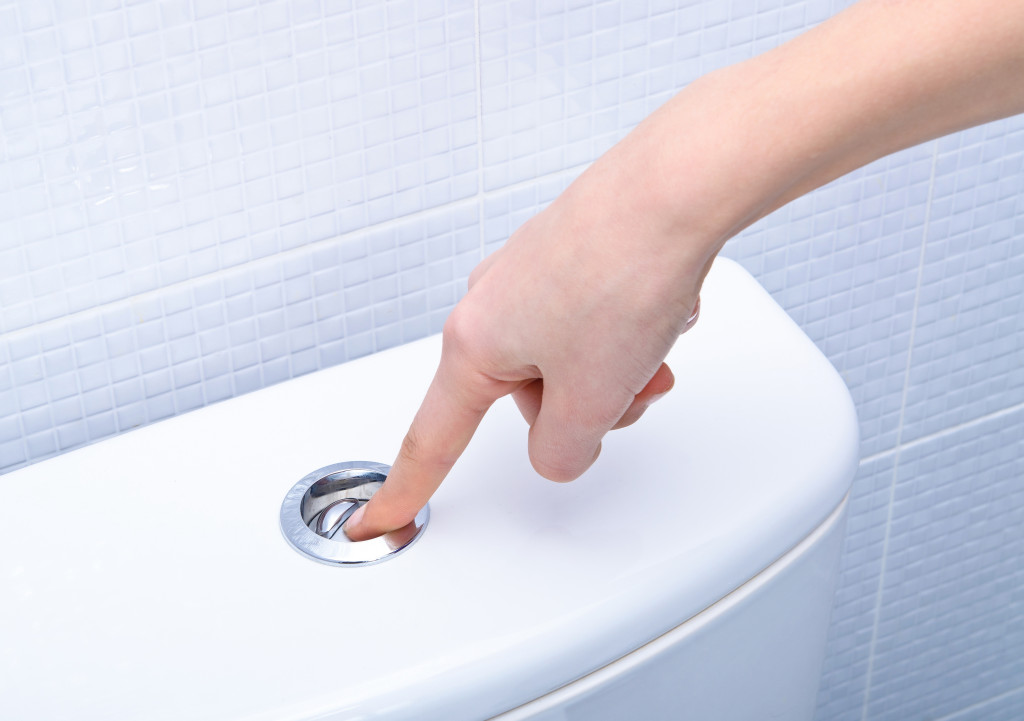Your home is your castle, and you should be able to feel safe and secure inside it. But when sewage starts backing up into your home, it can be a nightmare. Here are some tips to avoid this problem.
Know what not to flush.
Understanding what not to flush down your bathroom drains is essential for keeping those pipes running smoothly. The general rule of thumb is to only flush human waste and toilet paper. Things like cotton pads, wipes, Kleenex, condoms, and even dental floss should never go down the toilet; they can cause clogs, bad odors, and overflowing toilets.
And don’t get deceived by marketing– even if something is labeled as “flushable,” it still may not disintegrate in water as well as regular toilet paper does. Taking a few extra minutes to dispose of items correctly not only helps avoid costly plumbing repairs or backups but also decreases pollution in our oceans and waterways.
Have your septic tank pumped.
A septic tank is an oft-forgotten component of a property’s plumbing system, but it must not be neglected. Having your septic tank pumped every three to five years is essential to maintain its proper functioning.
Without regular pumping, the buildup of solid waste can impede the process that treats effluent and can cause overflow in the drains or backup into sinks and tubs. Excess bacteria in the system due to lack of maintenance can also enter other parts of your plumbing, potentially resulting in long-term damage or health risks.
Schedule an appointment with a reliable septic tank service provider to have your tank inspected and pumped regularly, so you don’t have to worry about costly repairs in the future! However, when choosing the right contractor, there are some key points to consider.
First, you should look for contractors with a good reputation in the area; reading reviews and talking to neighbors can give you an idea of which companies provide quality services. You should also check that the company is licensed and insured and make sure that you know exactly how much the job will cost before signing any paperwork. Finally, it’s best to get a second opinion from another contractor to compare pricing and services.
Install stop valves.
Stop valves are a great way to protect your home from sewage backups. They are inexpensive, relatively easy to install, and can be found in most hardware stores. Stop valves are placed at strategic points in your plumbing system, such as where the main line enters your house or at each fixture.
These valves prevent water from flowing back into your home, so if you have a main line break or your septic tank fails, the water won’t overflow. Installing these valves can save you time, money, and headaches in the future.
Use enzymes or other cleaners.
Septic systems require special care to keep them running efficiently and safely. Regularly cleaning out the septic tank is an essential part of this maintenance. Bleach, caustic soda, and even bacteria treatments aren’t recommended as cleaners here; instead, carefully select a specialty enzyme or other cleaner explicitly designed for septic tanks.
These cleaners break down solids in the septic tank using enzymes or beneficial bacteria – both chosen for their ability to digest organic material, safely keeping your system functioning readily. Paying attention to your manufacturer’s instructions and using only approved ingredients will help make sure your septic system is properly cared for.
Avoid using too much water at once.

In light of recent water outages, you must prevent overloading our plumbing system by cutting down on water use. You can do this by limiting the water used at once and spacing out uses throughout the day. Water pressure in many areas is already low, so increased usage can lead to problems such as reduced flows, decreased pressure, and contaminated water.
You must be mindful of how much water we are using and slowly reduce our water use if possible. A few simple changes can go a long way in helping ensure continued access to a clean and safe supply of drinking water for everyone.
Don’t plant trees or shrubs too close to the septic tank.
When considering where to locate trees or shrubs in your yard, keeping them a safe distance from your septic tank is essential. The root systems of various types of trees and shrubs can grow long and strong, searching for access to water sources underground. This can spell trouble with septic tanks: if the roots make their way into the tank, they can cause severe damage.
To create a healthy balance between landscaping and keeping your septic system functioning optimally, leave at least 10 to 15 feet between any trees or shrubs and your septic tank installation. This gives plenty of room for roots to spread while maintaining an appropriate distance from your septic system.
Sewage backups are no joke – they’re smelly, messy, and a huge pain to deal with. Luckily, you can take some simple steps to avoid them. Follow the tips mentioned, and your septic system will remain in top condition, ensuring your plumbing works properly and minimizing your risk of a costly sewage backup.

